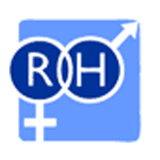
Abstract
Providing care to adolescent girls and women before and between pregnancies improves their own health and wellbeing, as well as pregnancy and newborn outcomes, and can also reduce the rates of preterm birth. This paper has reviewed the evidence-based interventions and services for preventing preterm births, reported the findings from research priority exercise, and prescribed actions for taking this call further. Certain factors in the preconception period have been shown to increase the risk for prematurity and, therefore, preconception care services for all women of reproductive age should address these risk factors through preventing adolescent pregnancy, preventing unintended pregnancies, promoting optimal birth spacing, optimizing pre-pregnancy weight and nutritional status (including a folic acid-containing multivitamin supplement) and ensuring that all adolescent girls have received complete vaccination. Preconception care must also address risk factors that may be applicable to only some women. These include screening for and management of chronic diseases, especially diabetes; sexually-transmitted infections; tobacco and smoke exposure; mental health disorders, notably depression; and intimate partner violence. The approach to research in preconception care to prevent preterm births should include a cycle of development and delivery research that evaluates how best to scale up coverage of existing evidence-based interventions, epidemiologic research that assesses the impact of implementing these interventions and discovery science that better elucidates the complex causal pathway of preterm birth and helps to develop new screening and intervention tools. In addition to research, policy and financial investment is crucial to increasing opportunities to implement preconception care, and rates of prematurity should be included as a tracking indicator in global and national maternal child health assessments.
Declaration
This article is part of a supplement jointly funded by Save the Children’s Saving Newborn Lives programme through a grant from The Bill & Melinda Gates Foundation and March of Dimes Foundation and published in collaboration with the Partnership for Maternal, Newborn and Child Health and the World Health Organization (WHO). The original article was published in PDF format in the WHO Report “Born Too Soon: the global action report on preterm birth” (ISBN 978 92 4 150343 30), which involved collaboration from more than 50 organizations. The article has been reformatted for journal publication and has undergone peer review according to Reproductive Health’s standard process for supplements and may feature some variations in content when compared to the original report. This co-publication makes the article available to the community in a full-text format.